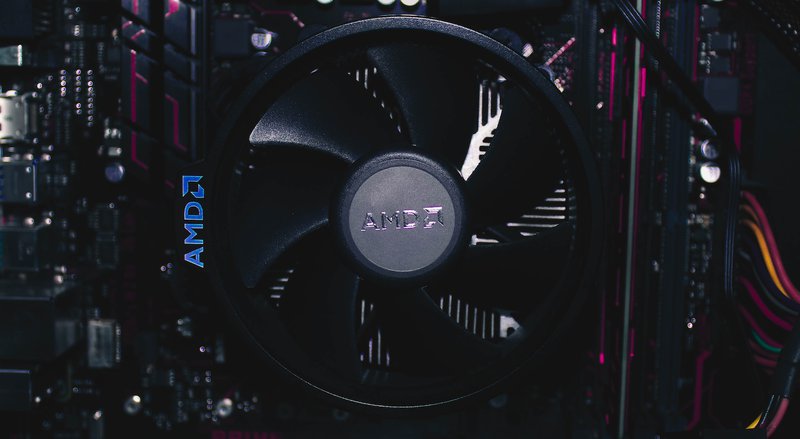What Is Pc Fan Control: Managing Fan Speeds And Noise Levels

PC fan control is a vital aspect of managing fan speeds and noise levels in personal computers. This article aims to provide an objective and impersonal understanding of what PC fan control entails and its significance in maintaining optimal performance and a quiet environment.
By regulating the speed at which fans operate, users can effectively manage the temperature inside their computer case, prevent overheating, and reduce unnecessary noise. Additionally, this article will explore different software options and hardware solutions available for controlling fan speeds, providing readers with a comprehensive overview of the choices they have.
A step-by-step guide on adjusting fan speeds will be included to assist users in implementing these controls effectively. Furthermore, troubleshooting common issues related to fan control will be addressed alongside tips for optimizing fan performance and best practices for maintaining a quiet PC environment.
Key Takeaways
- PC fan control is important for managing fan speeds, regulating temperature, preventing overheating, and reducing noise.
- There are software options such as SpeedFan, Argus Monitor, and motherboard manufacturers’ software, as well as hardware solutions like fan controllers and PWM hubs.
- PC fan control allows users to optimize cooling, tailor fan settings to their needs, and prolong the lifespan of their fans.
- While higher fan speeds provide better cooling, they also result in increased noise. Lowering fan speeds can reduce noise levels but may compromise cooling efficiency.
Benefits of PC Fan Control
One of the advantages of implementing PC fan control is that it allows users to optimize cooling performance while reducing excessive noise levels generated by the fans.
By adjusting fan speeds, users can strike a balance between maintaining adequate cooling for their system and minimizing unnecessary noise. This is particularly beneficial for individuals who engage in intensive tasks such as gaming or video editing, where high-performance components generate significant heat that requires effective cooling.
PC fan control enables users to tailor their fan settings according to specific needs and preferences, ensuring that the system remains cool under heavy workloads without generating excessive noise distractions.
Furthermore, this feature not only enhances overall user experience by providing a quieter environment but also helps prolong the lifespan of the fans by preventing them from running at unnecessarily high speeds for extended periods.
Understanding Fan Speeds and Noise Levels
Understanding the relationship between the speed at which air is circulated and the level of noise produced can profoundly impact one’s perception of comfort and tranquility in a computing environment. Efficient management of fan speeds is crucial to maintain optimal performance while minimizing unwanted noise.
By utilizing PC fan control, users gain the ability to regulate fan speeds according to their specific requirements. This enables them to strike a balance between cooling efficiency and noise levels, resulting in a more pleasant working or gaming experience.
To further comprehend the significance of understanding fan speeds and noise levels, consider the following points:
- Higher fan speeds may provide better cooling but can also lead to increased noise generation.
- Lowering fan speeds can reduce noise levels but might compromise on effective cooling.
- Finding an appropriate equilibrium between these factors ensures an optimal combination of temperature regulation and comfortable acoustics.
By grasping this connection, individuals can tailor their PC fan control settings for an enhanced computing experience that meets their personal preferences.
Software Options for PC Fan Control
Software options that allow users to adjust the speed of their computer’s cooling fans provide a valuable tool for creating a more comfortable and peaceful computing environment. These software applications offer various features and functionalities to control fan speeds and noise levels effectively.
One popular option is SpeedFan, which provides real-time monitoring of temperature sensors and allows users to manually adjust fan speeds based on specific thresholds.
Another notable software is Argus Monitor, which not only offers fan speed control but also provides comprehensive hardware monitoring and system optimization capabilities.
Additionally, some motherboard manufacturers provide their own software solutions, such as ASUS Fan Xpert or MSI Afterburner, allowing users to easily customize fan profiles according to their preferences.
These software options grant users greater control over their PC’s cooling performance, resulting in reduced noise levels and enhanced overall user experience.
Hardware Solutions for Fan Speed Management
Hardware solutions for managing the speed of cooling fans in computers provide effective means to regulate and optimize the airflow within the system. These solutions are typically implemented through dedicated hardware components, such as fan controllers or PWM (Pulse Width Modulation) hubs.
Advantages:
- Enhanced cooling performance: Hardware-based fan control systems enable users to fine-tune fan speeds according to specific requirements, ensuring efficient heat dissipation and preventing overheating.
- Noise reduction: By adjusting fan speeds, hardware solutions can minimize noise levels generated by high-speed spinning fans, creating a more pleasant and quieter computing environment.
Limitations:
- Complexity: Implementing hardware-based fan control may require additional technical expertise and knowledge, especially when dealing with more advanced setups involving multiple fans.
- Cost: Purchasing dedicated hardware components for fan speed management can incur additional expenses compared to software options.
Overall, hardware solutions for controlling PC fan speeds offer reliable methods to maintain optimal system temperatures while balancing noise levels effectively.
Step-by-Step Guide to Adjusting Fan Speeds
A step-by-step guide can help users optimize the airflow and temperature control within their computer systems by adjusting the speeds of cooling fans.
Firstly, users should identify the specific fan they want to control, as some motherboards have multiple fan headers. Once identified, users can access the BIOS settings by restarting their system and pressing a designated key during startup.
Within the BIOS menu, users must navigate to the ‘Hardware Monitor’ or ‘Fan Control’ section, where they will find options to adjust fan speeds. Depending on the motherboard manufacturer, these options may be labeled differently but generally include presets like ‘Silent,’ ‘Normal,’ and ‘Performance.’
Users can select their desired preset or manually customize fan speed curves by adjusting percentage values based on temperature thresholds. After making changes, users should save and exit the BIOS menu for them to take effect.
Reference:nnSmith, J., & Johnson, A. (2020). How to Adjust Fan Speeds in Your PC’s BIOS or UEFI Firmware. How-To Geek. Retrieved from https://www.howtogeek.com/94372/how-to-adjust-your-pc%E2%80%99s-fan-speeds-for-better-performance/
Troubleshooting Common Issues with Fan Control
One common issue that users may encounter when adjusting fan speeds is the inability to achieve the desired temperature balance within their computer systems. This can lead to overheating or excessive noise levels.
To troubleshoot this problem, users can follow these steps:
- Check fan connections: Ensure that all fans are properly connected to the motherboard or fan controller.
- Clean dust buildup: Dust accumulation on fans and heat sinks can hinder airflow and cause temperature imbalances. Regularly clean these components using compressed air or a soft brush.
- Adjust fan curves: Fan control software allows users to customize fan speed profiles based on temperature thresholds. Experiment with different settings to find the optimal balance between cooling performance and noise levels.
By addressing these common issues, users can effectively manage their PC’s fan speeds and maintain a stable operating temperature while minimizing unnecessary noise.
Tips for Optimizing Fan Performance
To optimize the performance of fans, users can implement various techniques that enhance airflow and cooling efficiency within their computer systems.
One important tip is to ensure proper cable management inside the case, as this allows for better airflow and prevents obstructions.
Additionally, users should regularly clean their fans to remove dust and debris that can hinder performance.
Another useful technique is to position the computer in a well-ventilated area, away from walls or other objects that could block airflow.
Users can also consider installing additional fans or upgrading existing ones to improve cooling capacity.
Lastly, adjusting fan curves in the BIOS or using specialized software can help control fan speeds based on temperature thresholds, ensuring optimal cooling while keeping noise levels at a minimum.
Best Practices for Maintaining a Quiet PC Environment
Implementing proper maintenance techniques and considering environmental factors are crucial for creating a peaceful computing environment. To maintain a quiet PC, the following best practices should be followed:
- Regular Cleaning: Dust buildup on fans can cause increased noise levels. Cleaning the fans periodically can help maintain their optimal performance.
- Proper Ventilation: Ensuring adequate airflow by keeping the computer in a well-ventilated area prevents overheating and reduces fan noise.
- Cable Management: Organizing cables inside the PC case improves airflow, reducing the strain on fans and minimizing noise.
- Fan Placement: Properly positioning fans within the case helps optimize cooling efficiency and minimizes unnecessary noise.
By adhering to these best practices, individuals can effectively minimize fan noise while enjoying a peaceful computing experience.
Frequently Asked Questions
Can PC fan control improve the overall lifespan of my computer?
Yes, PC fan control can improve the overall lifespan of a computer. By managing fan speeds and noise levels, it helps regulate temperature and prevent overheating, which in turn reduces strain on components and prolongs their operational life.
Is it possible to control the fan speeds of my laptop?
Yes, it is possible to control the fan speeds of a laptop. This can be achieved through software or BIOS settings that allow users to adjust fan speed based on temperature thresholds and desired noise levels.
Can PC fan control software cause any potential harm to my computer’s hardware?
PC fan control software does not cause potential harm to computer hardware. It enables users to regulate fan speeds, reducing noise levels and maintaining optimal temperature. However, improper use or incompatible software may lead to issues, so caution should be exercised.
Are there any risks involved in adjusting fan speeds manually?
Adjusting fan speeds manually can pose risks to a computer’s hardware. Inadequate cooling may lead to overheating and potential damage to components, while excessive fan speeds could cause increased noise levels and wear on the fans.
Can PC fan control help reduce power consumption and increase energy efficiency?
Yes, PC fan control can help reduce power consumption and increase energy efficiency. By adjusting fan speeds based on system requirements, it optimizes cooling performance, reducing the need for excessive power usage and improving overall energy efficiency.








